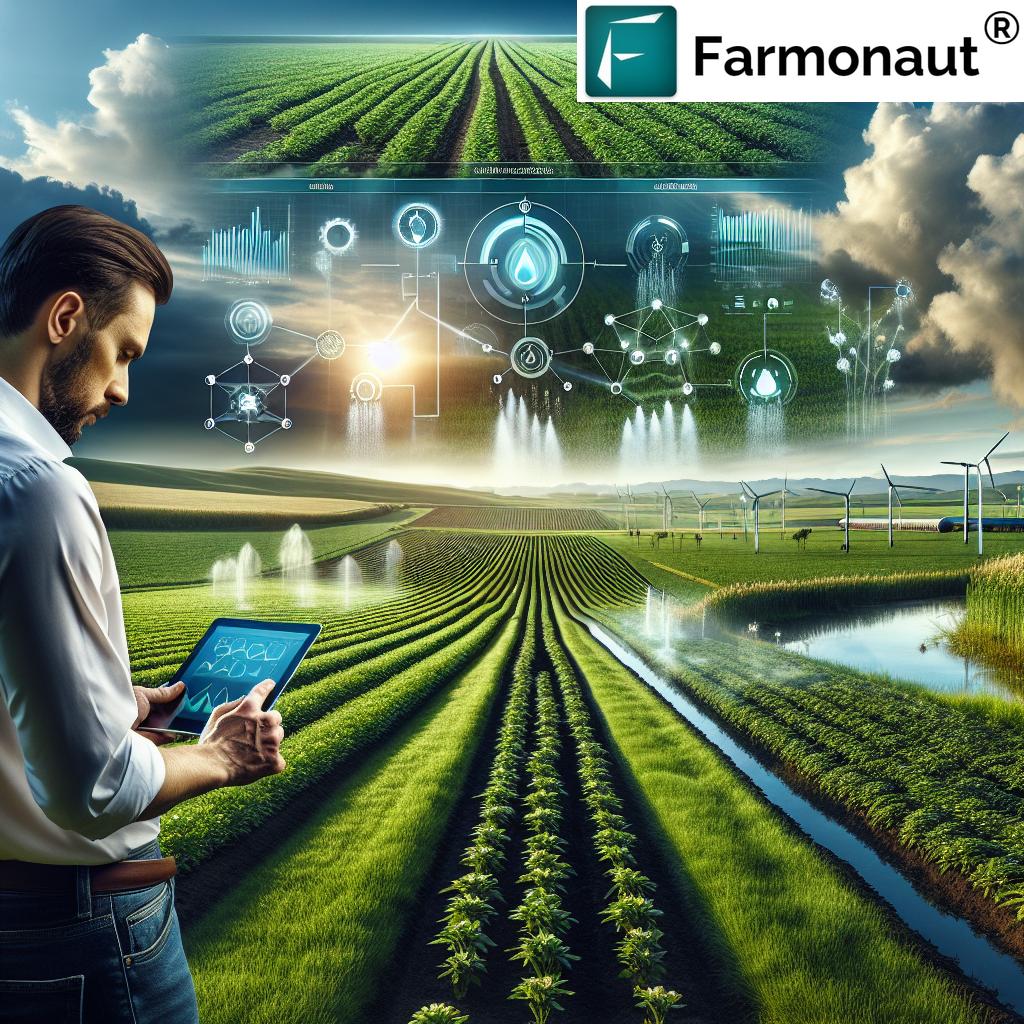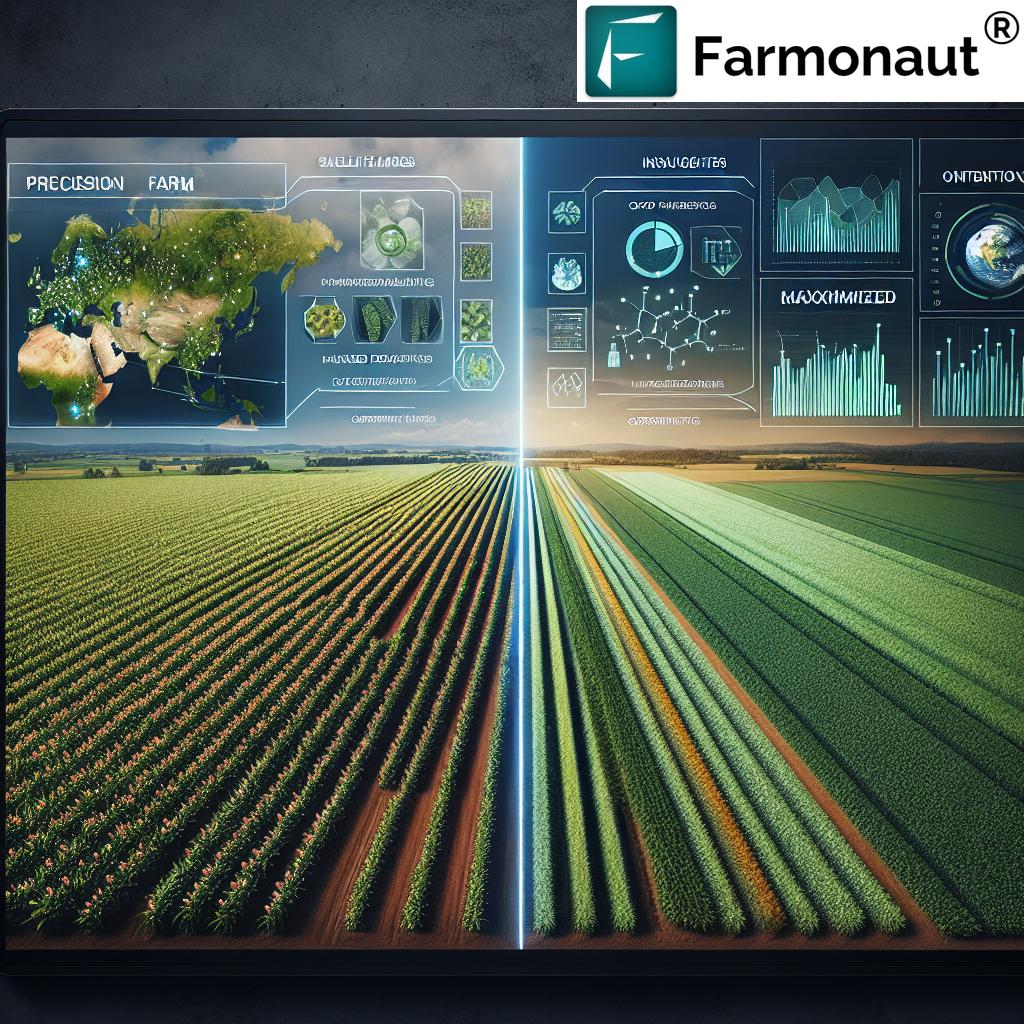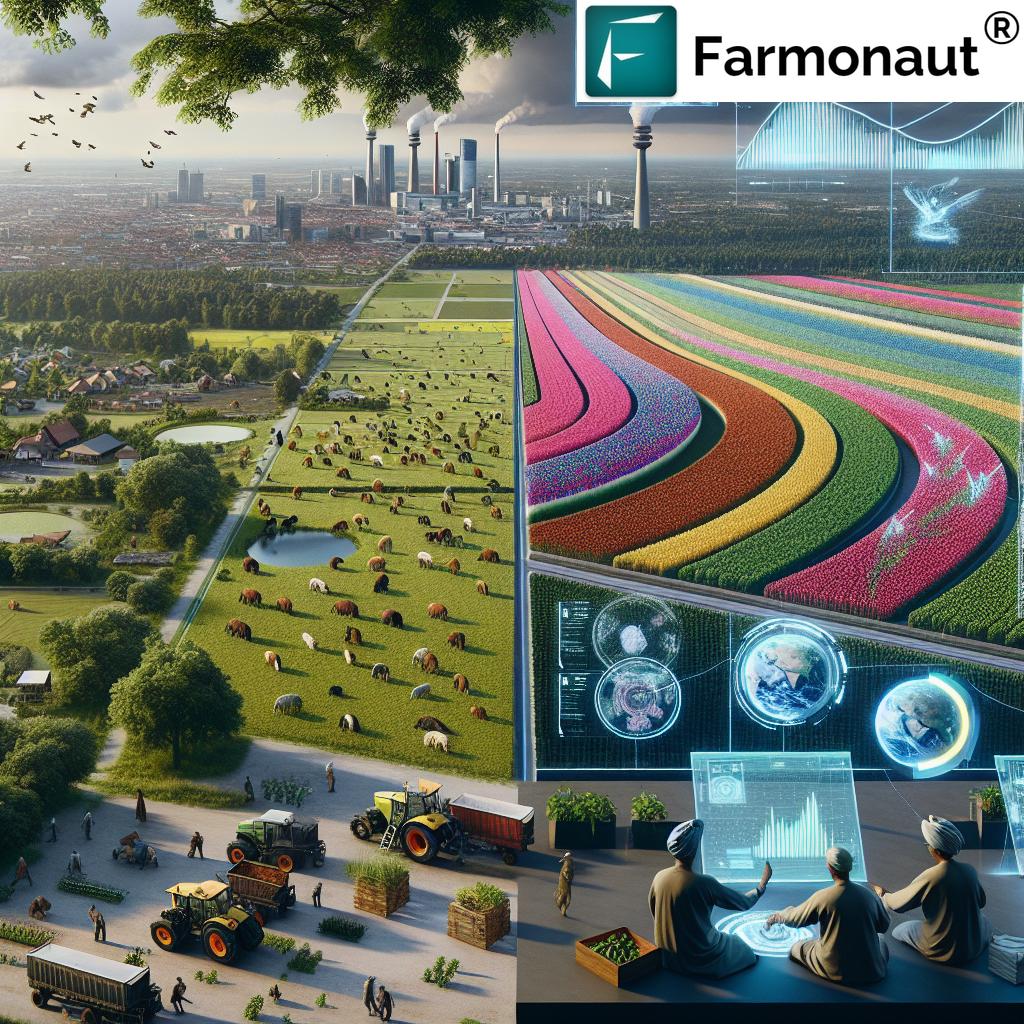Best Water Pump for Agriculture: Smart Drone Integration
Discover how agriculture drone water pumps and smart irrigation systems boost farming efficiency, optimize water use, and enhance sustainable crop yields in 2025 and beyond.
Table of Contents
- Introduction: Agriculture Water Pump Revolution in 2025
- Trivia: Smart Pumps & Drones Facts
- Why Water Pumps Remain Central to Agriculture
- Selecting the Best Water Pump for Agriculture
- Traditional Pumps vs. Smart Water Pump Systems
- Revolutionary Advancements: Agriculture Drone Water Pump Integration
- How Drone-Integrated Water Pump Systems Work
- Benefits: Efficiency, Sustainability & Productivity
- Feature Comparison Table: Water Pump Technologies in 2025
- Farmonaut’s Role in Smart Water Management
- Practical Tips: Choosing the Best Water Pump for Farming
- The Future: What to Expect Beyond 2025?
- FAQ: Agriculture Water Pumps & Drone Integration
- Conclusion: Building Resilient Farms With Smart Water Pump Technology
- Farmonaut Mobile Apps & API Access
- Farmonaut Subscription Plans
“Smart agriculture water pumps can reduce water usage by up to 50% compared to traditional irrigation methods.”
Introduction: Agriculture Water Pump Revolution in 2025
In recent years, agriculture has transformed beyond recognition, embracing smart technologies and data-driven innovations that are redefining the way farmers irrigate their fields and manage crop yields. The best water pump for agriculture in 2025 is no longer just a mechanical device—it’s a critical component of an interconnected, smart irrigation ecosystem. With the synergy of agriculture drone water pump systems, IoT platforms, and satellite-driven data analytics, farming is entering an era of unprecedented efficiency, savings, and sustainability.
This comprehensive guide explores how drone-integrated water pumps are changing the paradigm for agricultural irrigation. We’ll compare traditional and modern water pump for farming options, examine the impact of advanced monitoring and automation, and outline actionable steps for selecting the best water pump for agriculture in 2025.
Why Water Pumps Remain Central to Agriculture
Water pumps for agriculture remain the backbone of efficient irrigation management. From river-fed fields in South Asia to reservoir-backed farms in Africa, reliable water movement enables food security and sustainable crop yields. Here is why they play a crucial role:
- Consistent Water Supply: In areas where rainfall is unreliable or insufficient, an agriculture water pump ensures crops receive the necessary supply.
- Flexible Water Sourcing: Pumps move water from a variety of sources such as a river, well, or reservoir to meet farming needs.
- Enhancing Efficiency: By automating flow rates and timings, modern water pumps help farmers manage resources and reduce waste.
- Resource Conservation: Advanced systems minimize runoff, lowering the environmental impact and preserving vital groundwater.
- Supporting Large-Scale Operations: Across expanding agricultural landscapes, pumps can be scaled, automated, and linked with smart technologies for maximum benefit.
The continued evolution of water pump for agriculture technologies empowers farmers to address the challenges of climate variability, increasing demand, and resource scarcity in the 21st century.
Selecting the Best Water Pump for Agriculture: Critical Factors
Selecting the best water pump for agriculture requires careful consideration of multiple factors:
- Type of Water Source: Well, river, reservoir, pond, or rainwater harvesting system.
- Required Flow Rate & Pressure: Depends on crop type, soil infiltration rate, and farm size.
- Energy Availability: Diesel, electric, or renewable energy (e.g., solar).
- Automation & Smart Compatibility: Can the pump integrate with IoT or drone-based monitoring systems?
- Maintenance & Durability: How much downtime and maintenance is likely given the environmental conditions?
- Cost & Scalability: Upfront investment versus long-term operational savings and expansion potential.
To maximize yields and resource efficiency, modern agricultural water pump systems must be compatible with advanced monitoring, easy to maintain, adaptable in flow, and cost-effective in energy use.
From Traditional to Smart: How Modern Water Pumps Are Redefining Irrigation
For decades, traditional agriculture water pumps—mostly diesel or electric—dominated irrigation systems worldwide. While effective, these older technologies often come with high operational costs, frequent downtime, and significant environmental impact.
The paradigm began shifting with the adoption of renewable energy, such as solar-powered water pumps, and now with the rapid emergence of smart, automated, and drone-integrated solutions. These innovations offer immense popularity for their ability to reduce cost, save energy, and support sustainability initiatives.
- Diesel Water Pump: High power; flexible but noisy, polluting, and costly over time.
- Electric Water Pump: Lower noise and local emissions, but depends on grid access or generators.
- Solar Water Pump: Gained popularity due to low operational costs, minimal emissions, and strong environmental credentials.
- Smart Pump: Internet-connected; adaptable, data-driven, and remotely controlled for precision agriculture.
- Drone-Integrated Water Pump System: The most advanced: blends drone monitoring, real-time data, and automated operation for truly adaptive irrigation.
Agriculture Drone Water Pump Integration: A Revolutionary Development
The integration of agriculture drones with water pump technology presents a revolutionary advancement in irrigation management. Here’s how drone-integrated water pump systems are redefining agriculture by 2025:
- Real-time Monitoring: Drones fly over fields equipped with high-resolution cameras and sensors (monitoring NDVI, NDWI, soil, crop health, moisture levels, and more).
- Data Collection & Analysis: Data is analyzed on the fly or sent to cloud/IoT platforms—including satellite-powered platforms like Farmonaut—to identify which areas of the field are healthy, stressed, or under-watered.
- Automated Response: Based on drone-collected data, smart pumps automatically adjust watering schedules and flow rates for each zone—delivering water only “where and when needed”.
- Resource Optimization: Such systems drastically reduce water use while boosting yields, and lowering labor and maintenance costs.
This synergy empowers farmers to shift from schedule-based to needs-based irrigation—maximizing efficiency, saving costs, and promoting sustainable practices.
“Drone-integrated irrigation systems can cover and monitor over 100 acres in a single flight.”
How Drone-Integrated Agriculture Water Pump Systems Work
To fully appreciate the benefits of a smart, drone-linked water pump, let’s break down a typical workflow:
- Preparation & Survey: The drone is equipped with cameras and multispectral sensors to capture high-resolution images over the fields.
- Data Transmission: The drone transmits image data to an IoT platform or a satellite monitoring system, such as those offered by Farmonaut.
-
Analysis & Decision Making: Using AI algorithms, the system assesses:
- Soil moisture levels,
- Plant health (NDVI for crops, NDWI for water stress detection),
- Emerging dry/stressed patches, and optimal irrigation timing.
-
Command to Pump: The IoT smart water pump, linked to the platform, receives precise instructions:
- Which zones to irrigate,
- How much water to deliver (flow rate & duration),
- Which pump (if multiple) to activate.
- Automated or Manual Adjustments: Farmers can monitor and override as needed using web or app dashboards.
- Continuous Feedback: Drones can periodically resurvey and update data, enabling near-real-time precision control.
This closed-loop system is critical for minimizing downtime, addressing areas suffering from drying or over-irrigation, and optimizing yield with sustainable practices.
Key Benefits of Smart Irrigation & Drone Water Pump Integration
The adoption of agriculture drone water pump systems brings a wealth of advantages, particularly when paired with modern data analytics and satellite technologies:
- Water Efficiency: Data-driven irrigation can reduce water use by up to 50% by delivering the right amount at the right place and time.
- Yield Optimization: Real-time crop monitoring helps maximize yield per unit area, especially in high-value crop settings.
- Labor Savings: Farmers save time and labor costs by automating manual tasks and responding to alerts digitally.
- Environmental Impact: By minimizing over-watering, these systems reduce soil erosion, chemical runoff, and unsustainable groundwater extraction.
- Adaptability & Scalability: Easily integrates with expanding farms, can be controlled remotely, and supports expansion with minimal new investment.
- Reduced Maintenance: With predictive, data-driven scheduling, downtime due to pump overuse or failure is dramatically reduced.
- Resilience Against Climate Variability: Smart pumps and drone systems can adapt dynamically to changing weather conditions and irrigation needs.
In summary, drone-integrated water pump for agriculture systems empower farmers to achieve higher productivity, lower resource use, and sustainable growth.
Feature Comparison Table: Water Pump Technologies in 2025
*Figures are estimates for typical small-to-medium farms in 2025 and may vary based on brand, region, and capacity.
Farmonaut’s Role in Agriculture Water Pump Integration & Precision Irrigation
At Farmonaut, our mission is to make satellite-driven insights and precision agriculture technologies affordable and accessible worldwide. We are not manufacturers or sellers of farm machinery, but rather a global leader in providing innovative satellite-based solutions that:
- Monitor Crop Health & Soil Conditions: Our platform leverages multispectral satellite imagery and AI analytics to deliver real-time data on crop health, soil moisture, and field variability—empowering smarter irrigation management.
- Facilitate IoT-Driven Precision Irrigation: Integration with smart pumps and drone systems ensures water is delivered precisely where needed on your farm—minimizing waste and maximizing yield.
- AI & Advisory Tools (Jeevn AI): Get actionable irrigation, weather, and input advice for every crop growth stage, boosting productivity and resilience.
- Environmental Monitoring: Track carbon footprinting and other sustainability metrics with our Carbon Footprinting solutions—helping you meet compliance and embrace sustainable practices in agriculture.
- Resource & Fleet Management: Optimize your operational efficiency and reduce costs with Fleet Management tools, especially when managing multiple irrigation systems across large-scale farms.
- Blockchain Traceability: Ensure transparency in your agriculture outputs through Product Traceability—trace your irrigation-linked yields and inputs for consumer trust and compliance.
Our services are accessible via web, API, and mobile applications, making it seamless for
farmers, agronomists, and farm managers to control water pumps and monitor
crop health from anywhere, any time.
For government institutions and financial providers, we offer a Crop Loan and Insurance Verification System, supporting decision-making and risk reduction using objective satellite & irrigation data.
Learn more about how large-scale farm operations can leverage technology to optimize water usage with our Large Scale Farm Management Solution.
Practical Tips for Choosing the Best Water Pump for Agriculture and Drone Integration
Essentials for Selecting the Right Water Pump for Farming
- Map Your Water Sources: Determine if your water source is a river, well, or reservoir, and measure water input/output needs.
- Estimate Crop Water Requirements: Consider local soil conditions, crop type, and climate variability.
- Assess Farm Power Infrastructure: Match pump type to available energy (diesel, electric, or renewable).
-
Insist on Smart Compatibility:
- Select pumps that integrate with IoT platforms or drone-based systems for remote monitoring and control.
-
Look for Flow Rate Adaptability:
- Adjusting flow based on real data will help optimize both yield and resource use.
-
Prioritize Low Maintenance & Durability:
- Outdoor agriculture water pump systems should be weatherproof, corrosion-resistant, and easy to service.
-
Review Costs & Financial Tools:
- Balance initial investment versus recurring costs; look for insurance and financing tools, such as those offered by satellite verification.
What Makes Water Pumps Best for Drone-Integrated Farming?
- Ease of API/IoT Connectivity: Can be automated & remotely managed through compatible apps or central systems.
- Variable-Speed Operation: Enables precision irrigation by modulating flow rates as needed.
- On-the-Fly Troubleshooting: Built-in diagnostics and alerts minimize downtime and ensure continuous irrigation support.
- Battery Backup or Solar Charging: Essential for off-grid and remote farms.
- Rugged Design: Stands up to harsh outdoor conditions for years with minimal maintenance.
Example: A solar-powered, IoT-enabled water pump, linked to Farmonaut‘s satellite-driven monitoring dashboard, can receive moisture data from drones and adjust water delivery within minutes—no human intervention required!
What’s Next? Future Innovations in Agriculture Water Pump and Drone Integration
The next wave of agriculture irrigation technology will include:
- AI-Powered Predictive Analytics: Advanced models using field and satellite data to anticipate water stress and automate irrigation before shortage occurs.
- Fully Autonomous Swarm Drones: Coordinated drones handling real-time mapping, disease detection, and targeted watering—all without manual pilot intervention.
- Blockchain-Verified Water Use: Recording every irrigation event for compliance and transparent, sustainable sourcing in food supply chains.
- Ultra-High-Efficiency Pumps: Designs achieving >98% water usage efficiency and zero-leak distribution networks.
- Integration with Weather & Pest Models: Combining irrigation management with weather forecasts and pest pressure data for truly 360-degree resource optimization.
With platforms like Farmonaut at the cutting edge, global agriculture is set for even greater efficiency, transparency, and environmental progress in the years ahead.
FAQ: Best Water Pump for Agriculture & Drone Water Pump Integration
What is a drone-integrated agriculture water pump system?
A drone-integrated agriculture water pump system combines aerial drone-based field monitoring with smart IoT-connected water pumps, allowing for automated, data-driven irrigation across large or diverse fields. This technology adapts in real-time to crop and soil conditions, boosting efficiency and reducing water waste.
Are smart water pumps difficult to maintain?
Smart water pumps are designed for ease of maintenance—most offer built-in remote diagnostics, alerts, and predictive maintenance features. Select models rated 4 or 5 on the ease-of-maintenance scale can reduce downtime significantly.
How much can water usage be reduced?
In 2025, smart and drone-integrated irrigation systems routinely reduce water use by 30–50% compared to traditional methods, thanks to needs-based delivery and accurate field assessment.
Can these systems improve crop yields?
Yes—by ensuring each section of the field receives the optimal amount of water, these systems can boost potential yields by 25–40% for many crops under proper management, as shown in the feature comparison table above.
Do I need new infrastructure to implement smart or drone-integrated pumps?
Not always. Many smart water pump for farming solutions are designed to retrofit onto existing pumping infrastructure. However, integrating drones and full automation may require new IoT-compatible controllers and mobile/web platforms.
Conclusion: Building Resilient Farms with the Best Water Pump for Agriculture
By 2025, agriculture is being transformed through the convergence of smart water pumps, drone monitoring, and advanced data analytics. Selecting the best water pump for agriculture goes beyond mechanical capacity—it means ensuring compatibility with precision irrigation management, smart platforms, and sustainability objectives.
Farmonaut is proud to support this evolution. Our satellite-powered applications, AI advisory, and resource management tools empower farmers and agribusinesses to harness data, conserve vital resources, and optimize crop yields sustainably. As technology redefines modern farm irrigation, resilient operations will depend on embracing smart, automated, and integrated water pump systems for a productive, resource-efficient future.
Farmonaut Mobile App & API Access for Smart Water Management
Access our satellite-powered platform on any device:
- API Access: Farmonaut Water Pump for Agriculture API
- Developer Documentation: Satellite & Weather API Developer Documentation
Farmonaut Subscription Plans: Affordable Access to Smart Agriculture Insights
Unlock all advanced features for satellite-powered irrigation management, precision water pump integration, and more. Explore subscription options below:










